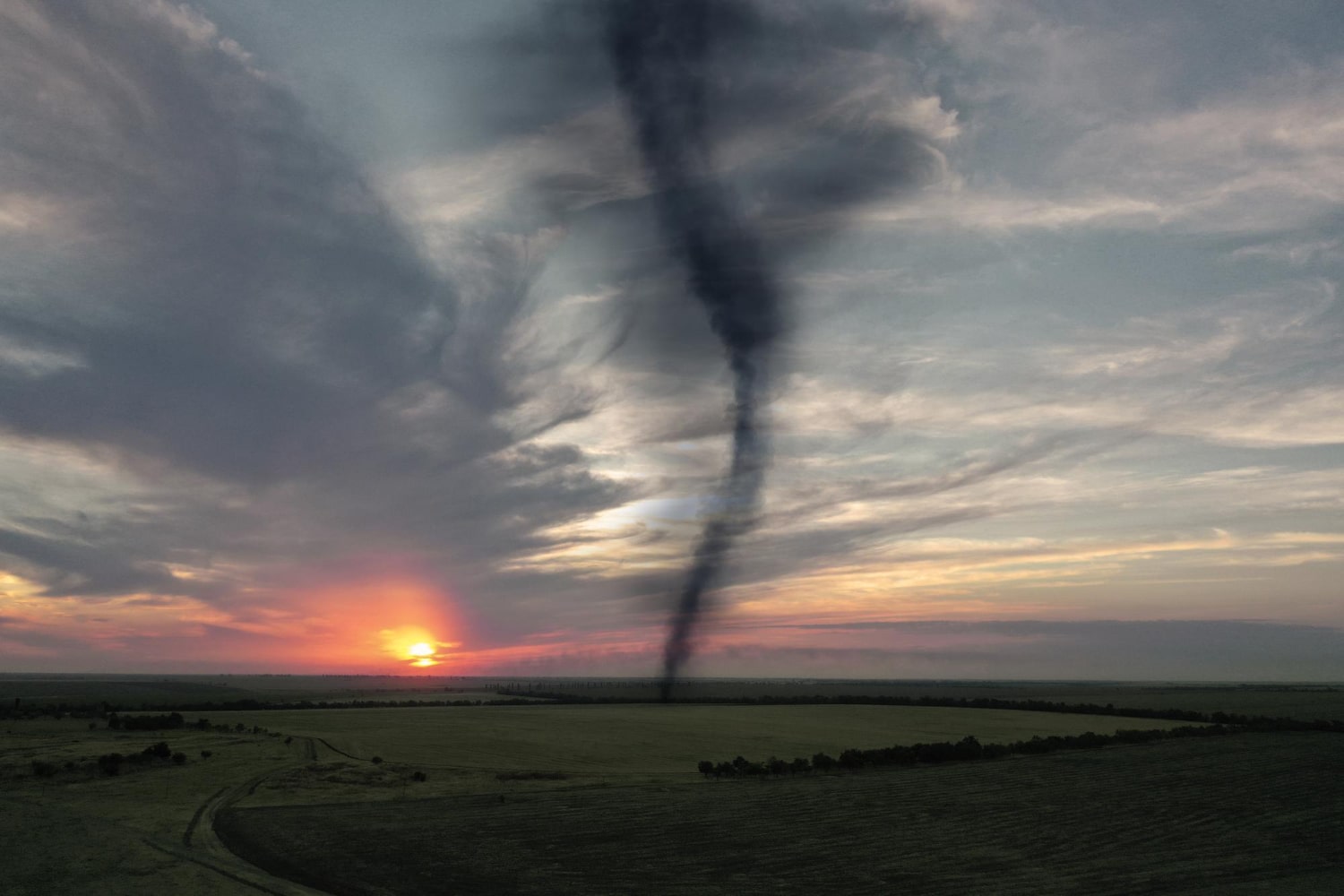Tornadoes are among the most dramatic and dangerous natural phenomena, astonishing in their power and unpredictability. They can destroy buildings, uproot trees, and carry heavy objects for dozens of kilometers. Although commonly associated with the United States, tornadoes can occur in many parts of the world. Their formation is a complex atmospheric process that scientists continue to study. Below are some fascinating facts about tornadoes that you may not have known.
- A tornado forms from a thunderstorm cloud and appears as a narrow, vertical rotating column of air. Its lower part touches the ground while the upper part extends into the cloud. The average diameter of a tornado is around 100 to 200 meters, but in some cases, it can reach several kilometers.
- The highest frequency of tornadoes is observed in the so-called “Tornado Alley” in the United States. This region includes Texas, Oklahoma, Kansas, and Nebraska, where weather conditions are especially favorable for strong thunderstorms. It is here that the most tornadoes in the world are recorded each year.
- Wind speeds in the center of a tornado can exceed 400 kilometers per hour. Such force can destroy houses, overturn vehicles, and even displace concrete structures. Objects caught in the vortex can be carried over great distances.
- One of the most destructive tornadoes in history struck Joplin, Missouri, in the United States in 2011. It was classified as an EF5 tornado, the highest category, and caused massive destruction, claiming over 150 lives. Such events are rare but extremely dangerous.
- In some cases, a tornado may consist of more than one rotating funnel. This phenomenon is known as a multi-vortex tornado. Each vortex can move independently around a common center, making the tornado even more unpredictable.
- Tornadoes can also form over water, where they are known as waterspouts. They form under similar conditions but are typically weaker than land-based tornadoes. Waterspouts still pose a threat to boats and coastal structures.
- A typical tornado lasts from several minutes to about half an hour. The longest-lasting tornado on record occurred in 1925 in the United States and traveled over 350 kilometers in more than three hours. It became known as the Tri-State Tornado.
- The color of a tornado depends on the particles it draws into its funnel. If it moves over dry land, it appears light and dusty. If it passes over swamps or water, it appears darker and more intense.
- Tornadoes are classified using the Enhanced Fujita (EF) scale, ranging from EF0 to EF5. EF0 tornadoes are weak and may only break tree branches or damage roofs. EF5 tornadoes are extremely powerful and capable of leveling entire buildings.
- Despite their strength, tornadoes often leave a very narrow path of destruction. The width of the affected area may be only a few dozen meters, while the length can stretch for kilometers. This makes predicting the extent of damage particularly challenging.
- Modern meteorological services can warn people of the possibility of tornadoes. They use radar systems, satellites, and ground-based observations. Warnings are usually issued minutes in advance, which is often enough for evacuation.
- In regions where tornadoes occur frequently, schools conduct special drills. Children are taught to take shelter in safe places such as basements or windowless interior rooms. These measures save lives in critical moments.
- Tornadoes can lift not only dust and debris but also animals, water, and household objects. There are reports of chickens, car tires, and even safes being found several kilometers from where the tornado passed. This is due to the strong upward currents within the funnel.
- Scientists study tornadoes using special probes, drones, and miniature sensors. These devices collect data on temperature, humidity, pressure, and wind speed inside the vortex. The information is used to improve forecasting models.
- In the folklore of many cultures, tornadoes were seen as manifestations of supernatural forces. Some believed they were expressions of divine anger or evil spirits. Today, science explains tornadoes as results of complex meteorological conditions.
- On satellite images, tornadoes appear as thin lines connecting the clouds to the ground. However, from the ground, they are far more impressive and intimidating. Their sound is often compared to a train or a jet engine.
- Tornadoes sometimes move in a nearly straight line while maintaining a symmetrical shape. But more commonly, they change direction suddenly and unpredictably. This complicates the work of emergency services.
- Tornadoes usually occur in the late afternoon when the air is at its warmest. This time of day supports the formation of strong upward air currents that help initiate the vortex. Tornadoes are much less common during the night.
- While tornadoes are mostly associated with the United States, they also occur in other countries, including Ukraine and parts of Europe. In Europe, they typically happen in the summer and mostly in southern regions. Though rarely strong, they can still cause significant local damage.
Tornadoes are a powerful reminder of nature’s might and unpredictability. These interesting facts provide a deeper understanding of how tornadoes form and why they are so difficult to forecast. You may not have realized just how diverse and unpredictable tornadoes can be across the globe. Watching them from a safe distance is both terrifying and awe-inspiring.





